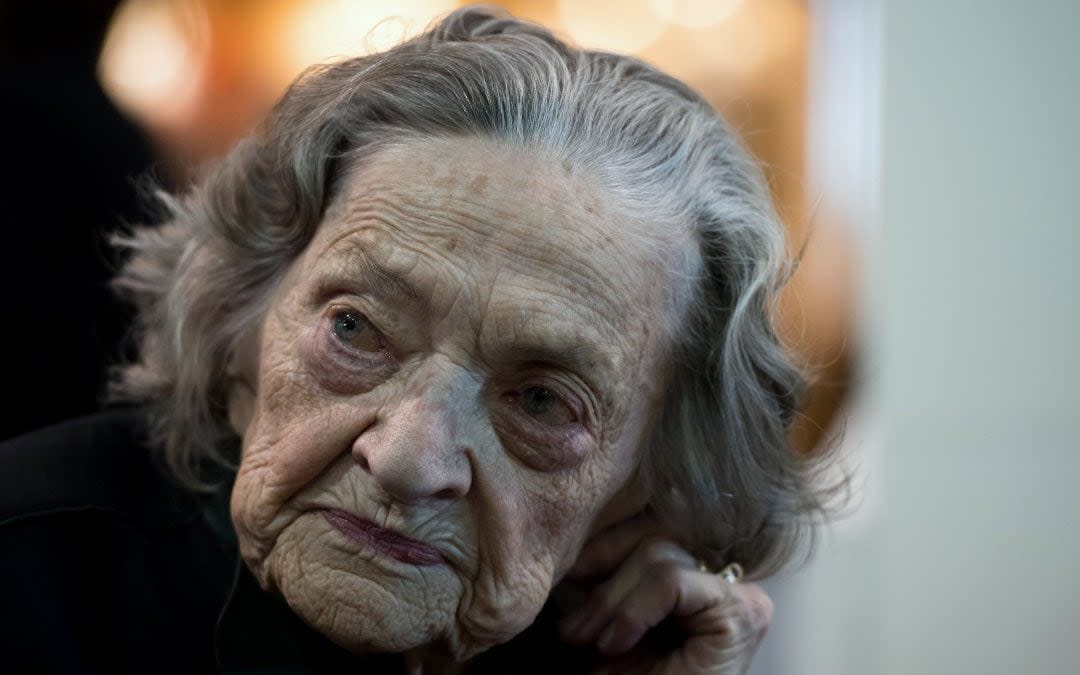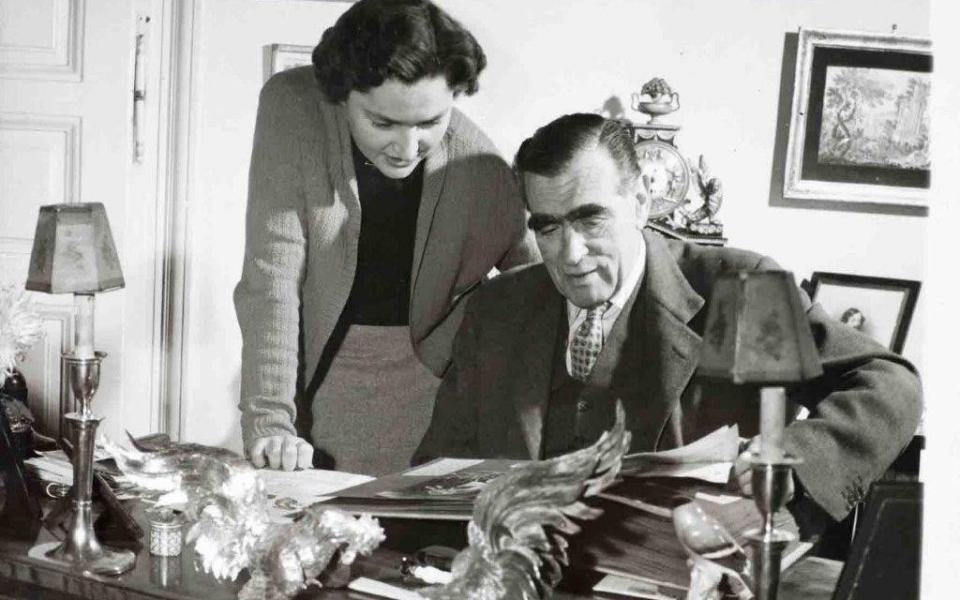Countess Margit Széchenyi, remarkable Hungarian noblewoman who deftly survived under socialist dictatorship – obituary

Countess Margit Széchényi, who has died aged 96, not only survived the indignities imposed on her and her class by the postwar Soviet puppet regime in Hungary; in many ways, she triumphed over them.
Beautiful, highly intelligent, and with a fluent command of several languages, including African dialects, she used these advantages to convince the hard-line communist apparatchiks controlling Hungary after the 1956 revolution to make a decision that would change not only her life but the lives of many others.
She negotiated a deal, unimaginable at the time, with the Budapest Communist leadership which sent her and her husband, Count Zsigmond Széchényi, to Africa on expeditions with a view to replacing the exceptional taxidermy collection which had been bombed out of existence in Budapest during the Second World War.
In doing so she managed to save not only one of Hungary’s great cabinet of curiosities, but also her husband from penury and homelessness. When she met Zsigmond Széchenyi in the 1950s, he was in such a perilous state of ill health that many of his friends feared he would not survive another winter in the dank basement in which the authorities forced him to live.
Such was the extraordinary range of experiences shared by this unusual couple that their time together was described years later by a friend as Out of Africa meets Doctor Zhivago.

She was born Margit Hertelendy de Hertelend Vindornyalak on March 26 1925, the only daughter alongside three boys in a family that traced its lineage to an ancestor in late 14th-century Hungary. The family was noble but untitled: this was a point of honour among many of the old Hungarian noble families, who viewed the act of accepting a Habsburg title as a degradation and not an advancement.
In 1925 Hungary was still reeling from the devastating effects of the 1920 Treaty of Trianon, which formally ended the First World War conflict between Hungary and the Allies but reduced both its land mass and its population by nearly two-thirds – though life in Budapest for a girl born into the purple of aristocratic life still held some prospects of glamour.
When Margit was 10, Patrick Leigh Fermor, passing through Budapest, caught something of the remaining lineaments of Hungarian aristocratic life at this time. He wrote of the nobles he met: “Tigers for turnout, they were well-groomed in what they thought was the English style; but they didn’t give a damn about my rough and ready outfit.”
A decade later, war, a brief flirtation with imposed fascism, and eventually communism combined to sweep away from Hungary the world Margit had briefly known. She and many more of her ilk were condemned as “class enemies” and “enemies of the people”. She resisted this with all the ferocity of one of the lionesses she would later encounter in Africa, and by a combination of sheer force of personality and charm, she managed to subtly annoy the Communist leadership during the country’s brutal Stalinist era.
Her marriage to an agricultural scientist, Myklós Birck, ended in divorce. Then in September 1959 began the great love affair of her life when she married a man nearly 30 years her senior. Margit Hertelendyi’s marriage to Count Zsigmond Széchényi de Sárvár Felsővidék took place during the darkest days of communism in Hungary and united two of the country’s grandest aristocratic families at a time when titles were forbidden by law.
Their wedding day was a far cry from Széchényi’s earlier nuptials when, in 1936, he had married Stella Crozier, the daughter of a Yorkshire cotton merchant at a ceremony officiated over by the Bishop of Székesfehérvár and a wedding breakfast held at Budapest’s magnificent Park Club. The couple divorced in 1945.
It took no great leap of the imagination for Margit to understand what her husband had suffered under communism – periods of imprisonment, torture, and internal exile when he was forced to live in a filthy henhouse. Friends and members of her own family had suffered a similar fate.
But it was not just this shared experience that attracted her to Széchényi. In 1927, when he hunted in Sudan with László Almásy – the model for “the English patient”of Michael Ondaatje’s novel – he had established a reputation as Hungary’s greatest hunter. It was not, though, the mass slaughter of animals in the shooting fields of Hungary or on the plains of Africa that appealed to Széchényi; he believed that culling was essential to maintain the survival of the various species he had encountered on his expeditions across the world.
Margit Széchényi soon realised that the abolition by the new Hungarian communist elite of many of the traditional activities of the aristocracy was by no means absolute. The new order was especially keen on game shooting, though in a manner that repelled both her and her husband; Mátyás Rákosi, the brutal dictator and ardent Stalinist, wore bespoke English tweeds to shoots, and once presided over the bagging of 8,000 pheasants on a single day’s sport.
After a shooting party for the inner circle, in a castle that once belonged to friends of hers, Countess Széchényi whispered to a friend: “If it were not for their dreadful manners and the fact that their wives looked like Valkyries, one might have imagined, just for a moment, that we were back in pre-communist Hungary.”
Still, Margit, using her husband’s fame as a legendary shot, took advantage of the party leaders’ vanity to secure a modest degree of improvement in the quality of their lives and those of many of their friends. When her husband died in 1967 she became the custodian of his hunting library and the vast photographic collection of his travels in Africa, which she kept in their modest flat in Buda.
She was known to her many friends only as Mangi néni or Aunty Margit, and at the end of her life her visiting card read simply Mrs Zsigmond Széchényi. She is survived by a daughter of her first marriage.
Countess Margit Széchényi, born March 26 1925, died September 6 2021

 Yahoo News
Yahoo News 
